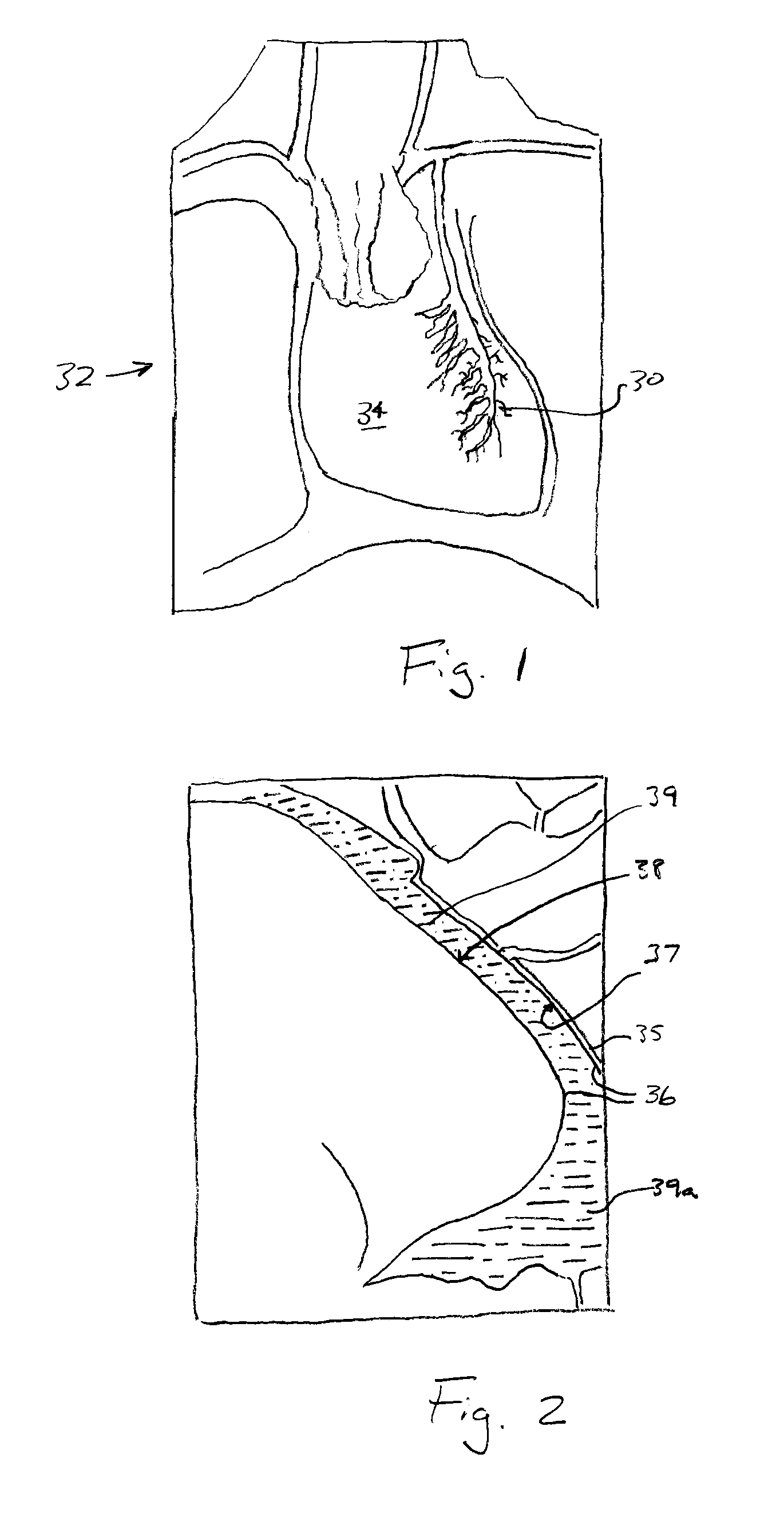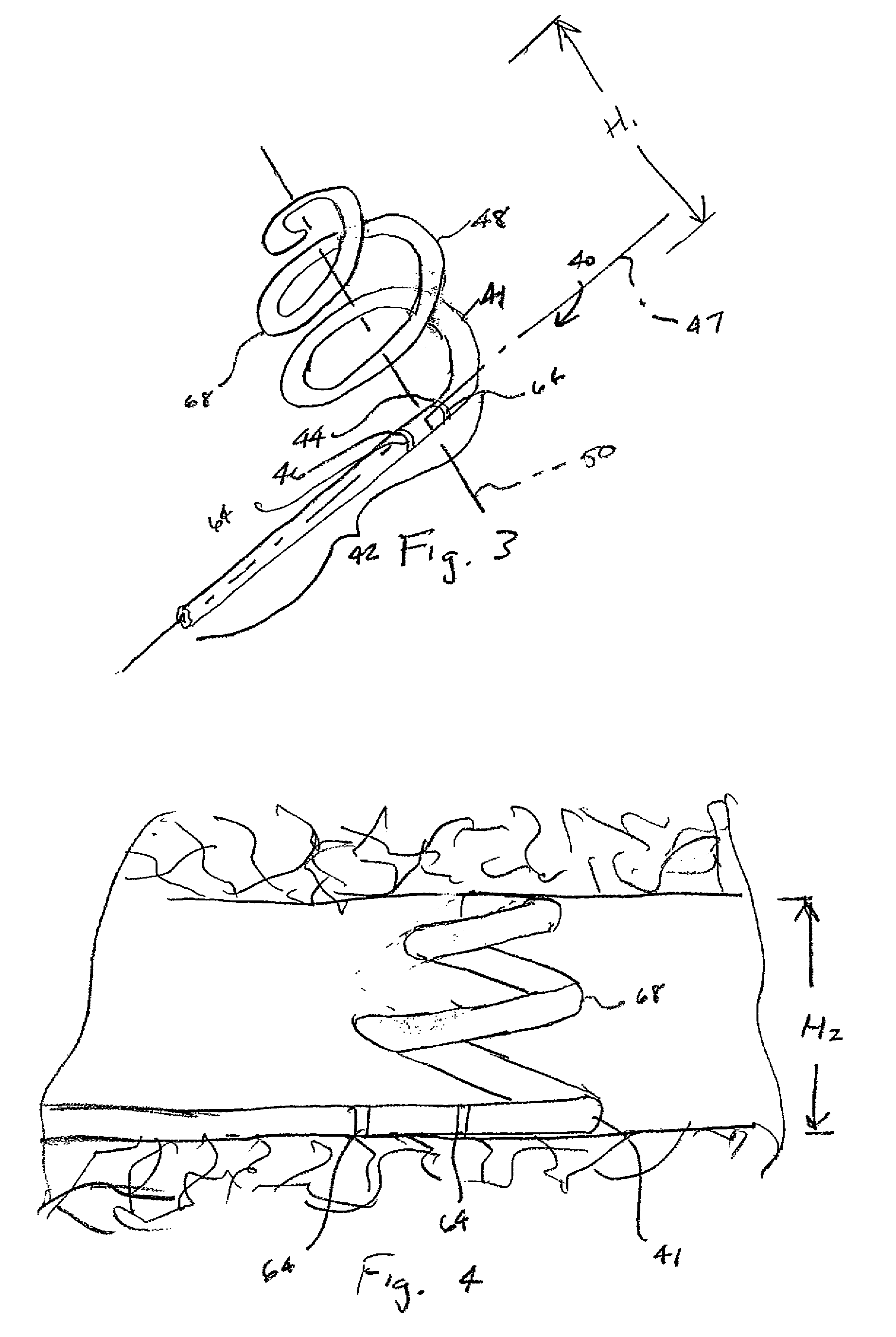Pacing lead and method for pacing in the pericardial space
a pericardial space and pacing lead technology, applied in the direction of internal electrodes, transvascular endocardial electrodes, therapy, etc., can solve the problems of difficult stabilization, inability to access the chamber of the heart or a specific location using a transvenous approach, and inability to meet the needs of patients, so as to enhance the position stability of the electrodes
- Summary
- Abstract
- Description
- Claims
- Application Information
AI Technical Summary
Benefits of technology
Problems solved by technology
Method used
Image
Examples
Embodiment Construction
[0065]Referring to FIGS. 3-6, a pacing lead 40 according to the various embodiments of the present invention generally includes a lead body 41 with a proximal lead portion 42 having a pair of electrodes 44, 46, and presenting a longitudinal lead axis 47, and a resilient fixation portion 48. Resilient fixation portion 48 is preformed in a helical configuration, with the helix being generally symmetrical about a fixation portion axis 50. Fixation portion axis 50 may be generally normal to longitudinal lead axis 47 so that resilient fixation portion 48 extends laterally relative to proximal lead portion 42. Pacing leads are generally known in the art and are disclosed in U.S. Pat. No. 6,321,123 to Morris et al. and U.S. Pat. No. 5,683,445 to Swoyer, both of which are incorporated herein by reference in their entirety.
[0066]In the embodiment depicted in FIG. 6, lead body 41 generally includes inner body 52 with defining central lumen 54, inner conductor 56 which is electrically coupled ...
PUM
 Login to View More
Login to View More Abstract
Description
Claims
Application Information
 Login to View More
Login to View More - R&D
- Intellectual Property
- Life Sciences
- Materials
- Tech Scout
- Unparalleled Data Quality
- Higher Quality Content
- 60% Fewer Hallucinations
Browse by: Latest US Patents, China's latest patents, Technical Efficacy Thesaurus, Application Domain, Technology Topic, Popular Technical Reports.
© 2025 PatSnap. All rights reserved.Legal|Privacy policy|Modern Slavery Act Transparency Statement|Sitemap|About US| Contact US: help@patsnap.com



